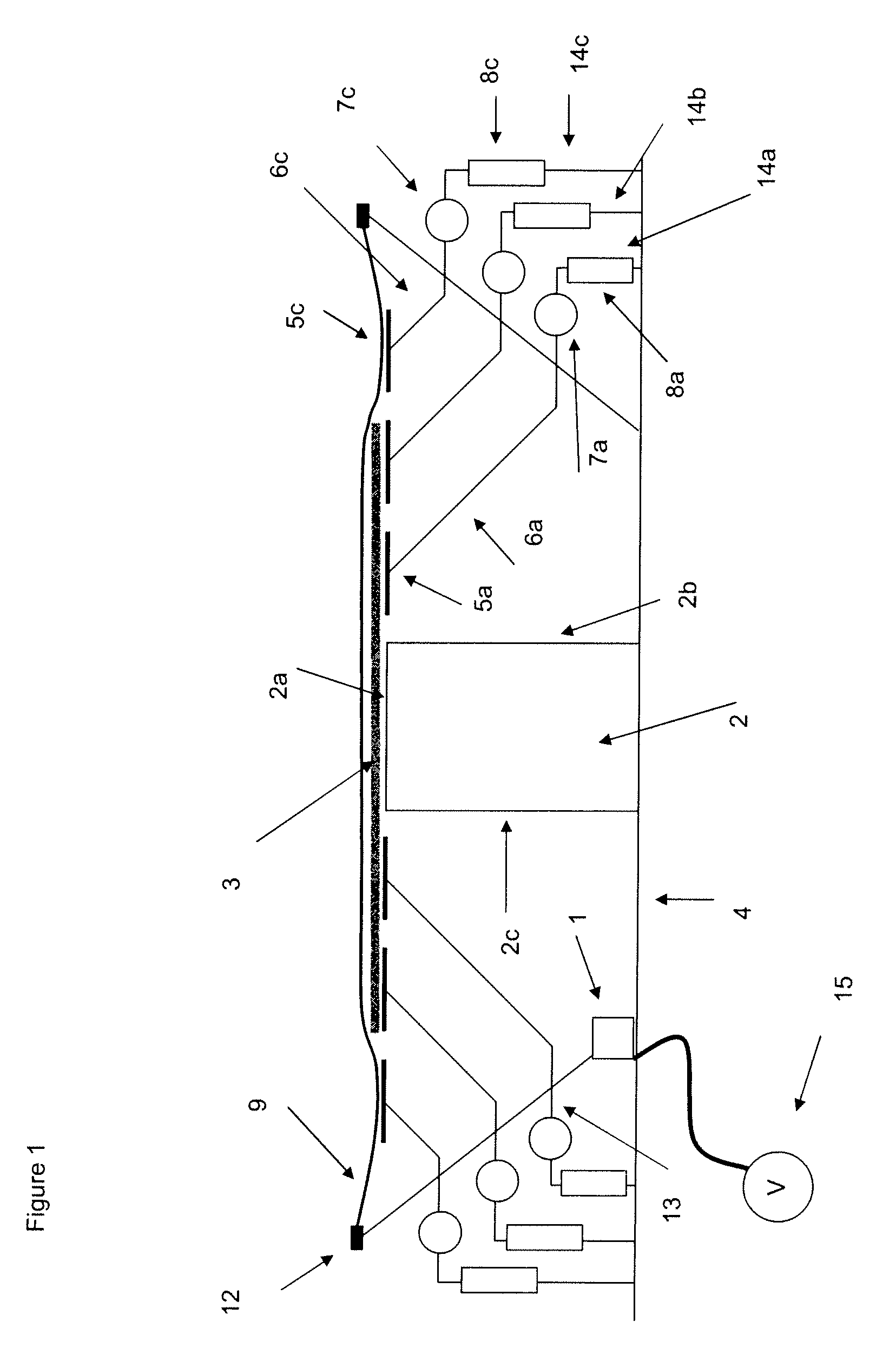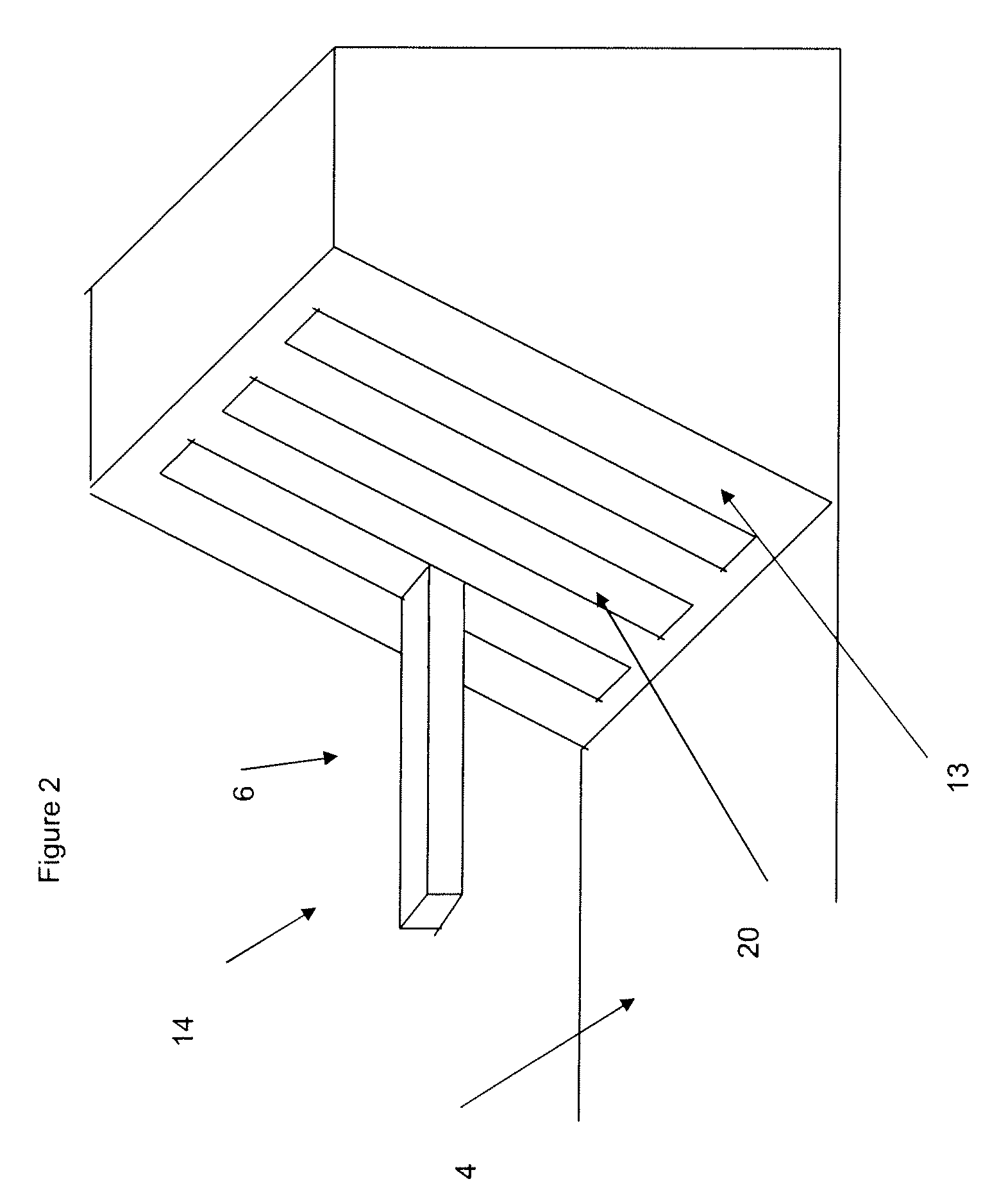Method and device for shaping of composite material
a composite material and shaping technology, applied in dough shaping, manufacturing tools, other domestic objects, etc., can solve the problems of material not closely following the contour of the forming tool as the material forms, the pressure of the vacuum foil is too low, and the problem is even larger for heavy blanks, so as to achieve the effect of less manual labor
- Summary
- Abstract
- Description
- Claims
- Application Information
AI Technical Summary
Benefits of technology
Problems solved by technology
Method used
Image
Examples
Embodiment Construction
FIG. 1 illustrates a device 1 for shaping a blank 3 of composite material over a tool 2 including a an air-tight foil 9, preferably the shaping is performed by heating the blank to its softening temperature and applying pressure on the blank to force it to form over the tool 2, so called thermoforming.
The device 1 according to the invention for shaping an article of composite material comprises a container 21 including a base 4, which is surrounded by an inclined wall 13. The base 4 supports a heatable forming tool 2 having a top surface 2a and side surfaces 2a and 2c. The tool extends in the longitudinal direction of the container 21. The device 1 further includes one or more support arrangements 14a-n each comprising a flat elongated support means 5a-n and an arm 6a-n. The support means 5a-n are arranged on the arms 6a-n. The support arrangements 14a-n further comprises raising / lowering means 8a-n arranged on one end of the arms 6a-n. The raising / lowering means 8a-n could be hydra...
PUM
| Property | Measurement | Unit |
|---|---|---|
| distance | aaaaa | aaaaa |
| distance | aaaaa | aaaaa |
| temperature | aaaaa | aaaaa |
Abstract
Description
Claims
Application Information
 Login to View More
Login to View More - R&D
- Intellectual Property
- Life Sciences
- Materials
- Tech Scout
- Unparalleled Data Quality
- Higher Quality Content
- 60% Fewer Hallucinations
Browse by: Latest US Patents, China's latest patents, Technical Efficacy Thesaurus, Application Domain, Technology Topic, Popular Technical Reports.
© 2025 PatSnap. All rights reserved.Legal|Privacy policy|Modern Slavery Act Transparency Statement|Sitemap|About US| Contact US: help@patsnap.com



